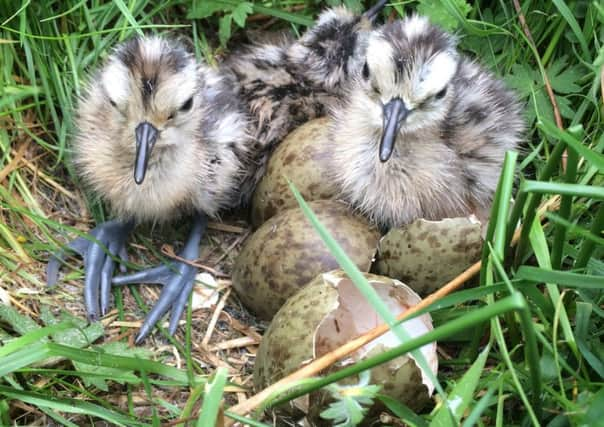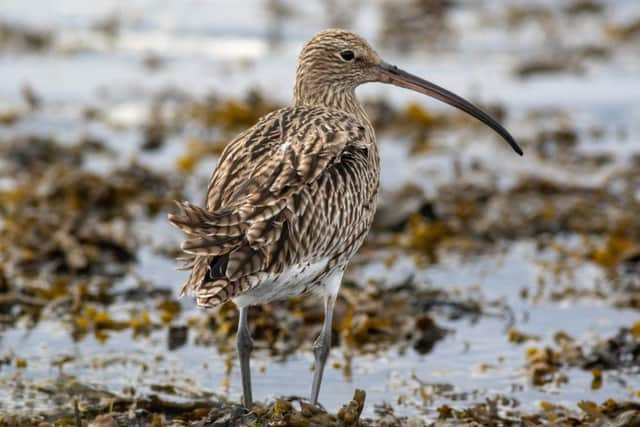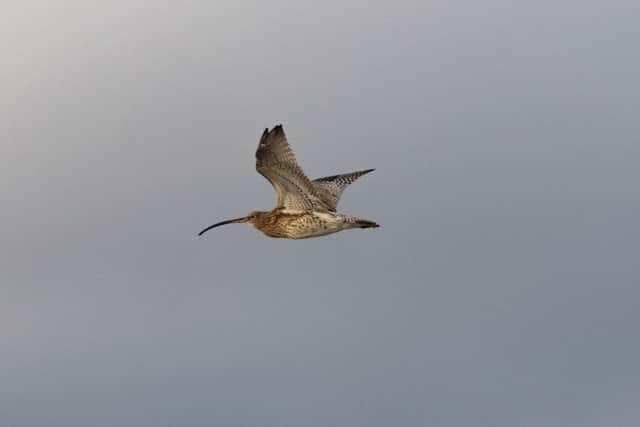NATURE NOTES: The bird with the bow-like bill and the mournful call


It’s from this call that the bird gets its common name of curlew or Eurasian curlew to give the species its proper name.
Both parts of the scientific name, numenius arquata, come from the long, de-curved shape of the birds bill, numenius means new moon and arquata means bow-like.


Advertisement
Hide AdAdvertisement
Hide AdIn remoter parts of Northumberland as well as in Scotland, the curlew is known as the ‘whaup’ from the noise of the mournful call that they make.
The ‘whaup’ call is accompanied by an attractive ‘bubbling’ display call from birds in flight.
The curlew is the biggest British wading bird.
It’s about the size of a herring gull but with much longer stilt-like legs.


They are a bird of the hill and the coast in our county, returning to the upland grasslands of the Cheviots and North Pennines to breed each spring but spending their winter on the coast, probing the soft mud and sand with their long bills for tasty goodies like worms or investigating the rocky shore for soft-shelled crabs.
Advertisement
Hide AdAdvertisement
Hide AdAs the tide comes in, covering mud and sand, curlews can be seen in large flocks on coastal grasslands, arable fields and over-wintered stubbles.
The numbers of curlews wintering on the coast is greatly swelled by birds arriving from Finland and Scandinavia each autumn.
Unlike lapwings, which return to the hill-country during mild spells, even in mid-winter, the curlew only returns when it’s time to breed.
The Northern Upland Chain Local Nature Partnership are asking people to log when their curlews return this year.
Advertisement
Hide AdAdvertisement
Hide AdYou can do this via their website at http://www.nuclnp.org.uk/curlew-conservation/
The reason for this monitoring is that the curlew is a species in serious trouble.
The UK breeding population has nearly halved since the mid-1990s and, in Ireland, breeding numbers are down by a staggering 96%.
Home to a quarter of the world’s curlew population, the UK is the third most important country for curlew in the world, after Russia and Finland.
Advertisement
Hide AdAdvertisement
Hide AdA reduction in breeding success is the main reason behind the population decline.
To survive as a species, curlews need to successfully fledge at least one chick every couple of years. Policies that often govern how land is managed in the UK have resulted in a reduction of suitable breeding habitat and as numbers of breeding pairs reduce, the birds that are left become more prone to predation.
Sir Edward Grey, the 1 st Viscount of Fallodon, in his book The Charm of Birds, wrote: ‘Of all bird songs or sounds known to me there is none that I would prefer than the spring notes of the curlew… The notes do not sound passionate they suggest peace, rest, healing joy, an assurance of happiness past, present and to come.
‘To listen to curlews on a bright, clear April day, with the fullness of spring still in anticipation, is one of the best experiences that a lover of birds can have.’
Advertisement
Hide AdAdvertisement
Hide AdI would, of course, agree with Sir Edward and wouldn’t it be a great pity if this most Northumbrian of birds (it is the symbol of the Northumberland National Park after all) were to disappear from our uplands?
Hopefully, conservation bodies working together on the ground and influencing Government policy can bring about a positive change for our curlews here in Northumberland so that future generations can experience the same joy as Sir Edward Grey did on his visits to the Cheviot Hills.
Iain Robson is the author of DruridgeDiary.com. Twitter: @Ipin_by_the_sea